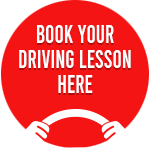In addition to learning the skill to drive a motor car, the ability to respond to hazards is a vital requirement to ensure a safe driving experience for all road users.
This means the driver needs to adopt the attitude of showing care and concern towards other road users.
The general rule is that a driver should be constantly scanning for hazards.
SCANNING for hazards becomes even more important whenever the driver is travelling through a congested area where there are pedestrians, cyclists, and other cars constantly moving through the area.

This is when the driver must be constantly on the lookout and scanning for the following hazards (driving lessons currans hill)
- Pedestrians walking out onto the road.
- Cyclists riding into your lane.
- Cars coming out of side streets unexpectedly
- Cars reversing out of driveways, and obstructing traffic.
- Cars doing parking manoeuvres and swinging out into your pathway cause an obstruction.
- Cars driving onto the wrong side of the road.
- Cars taking off from the kerb and not waiting for a safe gap.
- Block Outs – cars/trucks/trees or structures obstructing the driver’s view of oncoming cars.
- People open their car doors without checking to look for oncoming cars travelling next to them.
Things to keep in mind
- When driving through congested areas the driver needs to firstly slow down to an appropriate speed to facilitate stopping the car if necessary.
- Be vigilant and watch for unexpected events.
- Keep your foot covered on the foot brake and be ready to apply the brakes when necessary.
- When you see a hazard coming up slow down even more and be ready to stop if necessary
- Using your brake is your first option to avoid an incident or dangerous situation.
- Try to avoid swerving or late sudden lane changing, as this can cause an even more dangerous situation to occur such as running into another car or running off the road into the path of pedestrians walking on the footpath.
- Keep your eyes on the road and do not allow your attention to be distracted by activity that is happening on the side of the road as this will stop you from seeing what is happening up ahead. (pull over to the side of the road and go and check out the distraction/event that was happening on the side of the road.)
- Remember to keep a safe three-second gap between you and the car in front of you. If you maintain that gap, it will enable you to stop in time to avoid crashing into the car in front of you, if it stops suddenly & unexpectedly in front of you.


